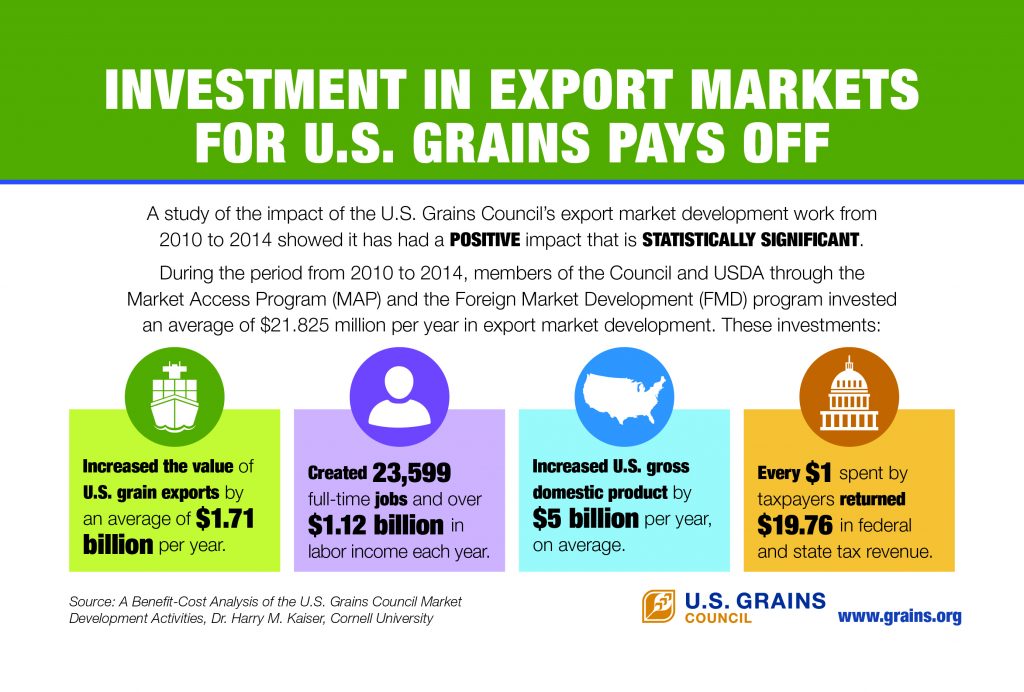Planting progress, prices and trade policy concerns dominating the headlines also demonstrate how important it is to talk about trade’s benefits for agriculture and the nation during World Trade Month this May.
“The growth of global demand for the products we represent is essential as is the tremendous value of export market development,” said Deb Keller, USGC chairman and a farmer in Iowa. “We continue to fully engage in various trade policy debates while being active in broad, global export market development – our core competency since 1960.”
The Council’s work to promote exports of U.S. feed grains and co-products has generated a significant return on investment (ROI) for U.S. farmers and agribusinesses. A study by Dr. Harry Kaiser, professor of applied economics and management at Cornell University, analyzed the combined effect of USGC member support and funding from the U.S. Department of Agriculture’s (USDA’s) Market Access Program (MAP) and Foreign Market Development (FMD) program.
He concluded spending on overseas market development for U.S. feed grains and related products increased the value of those exports by an average of $1.71 billion per year from 2010 to 2014 and increased U.S. gross domestic product (GDP) by an average of $5 billion per year, returning $19.76 for every $1 spent by taxpayers.
The benefits of these exports extend even further than the direct ROI from the Council’s work. A 2017 study released by the Council and the National Corn Growers Association (NCGA) quantified the critical support that exports of U.S. feed grains and co-products provide to the U.S. economy, including the direct and indirect economic benefits to farmers and rural communities. The study concluded U.S. feed grain and grain product exports were worth $18.9 billion in 2015 and supported $55.5 billion in economic input. These exports were linked directly or indirectly to nearly 262,000 jobs. (View an interactive map of the economic impacts of exports by state here.)
Additionally, researchers concluded that every $1 of grain exports supported an additional $2.19 in business sales, and every job directly created by the export of grain and grain products supported an additional 4.7 jobs in the United States.
These studies and decades of experience by Council staff and dedicated members are clear – by working together to capture short-term market opportunities and build long-term demand, the entire agricultural value chain benefits.
This World Trade Month, follow along with the Council on Facebook, Twitter and Instagram for more updates and information about the Council’s work to address the trade policy concerns of today and find the markets of tomorrow.
About The U.S. Grains Council
The U.S. Grains Council develops export markets for U.S. barley, corn, sorghum and related products including distiller’s dried grains with solubles (DDGS) and ethanol. With full-time presence in 28 locations, the Council operates programs in more than 50 countries and the European Union. The Council believes exports are vital to global economic development and to U.S. agriculture’s profitability. Detailed information about the Council and its programs is online at www.grains.org.

